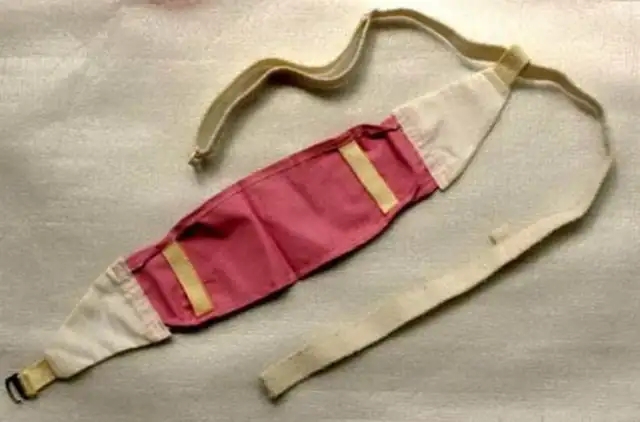Menstruation, often euphemistically referred to as “Aunt Flo,” has been a natural part of women’s lives for millennia. But have you ever wondered how ancient women managed their periods before the invention of modern sanitary pads and tampons? Let’s take a fascinating journey into history and explore how women dealt with “that time of the month” in different eras.
Ancient Beliefs and Superstitions
In ancient China, menstruation was known as “yue shi” (meaning “monthly matter”), a term that reflects its natural occurrence. However, due to limited medical knowledge, menstruation was often viewed with suspicion. Some early societies, including those in prehistoric times, believed that menstrual blood was ominous and could bring misfortune. As a result, women were sometimes isolated during their periods to prevent “bad luck” from affecting the community.

Even in the Ming Dynasty (1368–1644), the famous physician Li Shizhen warned in his medical encyclopedia, Compendium of Materia Medica, that menstruation could harm men’s vital energy, advising men to keep their distance from menstruating women. This belief echoes the menstrual taboos found in many ancient cultures worldwide, from the Romans to the Middle Ages in Europe.
The “Moon Cloth”: Ancient China’s Answer to Sanitary Pads
Despite these misconceptions, ancient women still needed practical solutions to manage their periods. Enter the yue shi bu—the “moon cloth” or “period belt.” This reusable menstrual product functioned similarly to today’s cloth pads. Women crafted these from clean fabric, shaping them into long strips about 10 cm wide. Some were even designed with protective “wings,” much like modern sanitary pads, to prevent leakage.
A particularly interesting feature of these cloth pads was the use of plant ash as an absorbent material. The ash, obtained from burned plants, helped soak up menstrual flow, reduced moisture, and even had antibacterial properties. Women would replace the ash regularly and wash the cloth before drying it in the sun. Wealthier women sometimes used cotton or paper instead, but neither was as effective as plant ash for absorption.
For additional hygiene, some women would rinse their period cloths with alum, a natural antibacterial agent, to ensure cleanliness. However, menstruation remained a deeply private matter, to the extent that some husbands never even knew what a period cloth looked like—even after years of marriage!
Discreet Period Talk: Coded Messages in Ancient Times
Because menstruation was considered an extremely private issue, women developed coded language to communicate about their periods. Instead of saying, “I have my period,” a woman might say, “I am wearing red makeup” or “I need to wash my dress.” A Tang Dynasty poet, Wang Jian, even referenced this discreet practice in a poem about palace maids dealing with menstruation:
The imperial pond glistens in the spring light, White jade channels guide its streams afar. Secretly they report to His Majesty, Calling for company to cleanse their skirts.
This poem hints at how palace maids informed the emperor that they were on their period—without directly mentioning menstruation.
The Arrival of Modern Sanitary Pads
Fast forward to the 20th century, and menstruation care took a dramatic turn. In 1920, the American company Kimberly-Clark revolutionized menstrual hygiene by mass-producing the first disposable sanitary pads made from fiber cotton and gauze. By 1928, advertisements for these “sanitary napkins” had reached China, marking the beginning of a new era for menstrual care.
Interestingly, the famous Chinese intellectual Hu Shi was an early advocate for modern menstrual products. His magazine, Knowledge, published an article titled Research on Women’s Menstrual Cloth, encouraging women to switch to Western-style disposable pads. These pads were sold in boxes of 12 and were reusable or disposable—offering women a convenient alternative to traditional menstrual cloths.
Menstrual Hygiene in Modern China
Despite the early introduction of sanitary pads, they did not become widely used in China until much later. Due to economic hardships in the mid-20th century, many women continued using folded toilet paper as a substitute for sanitary pads. It wasn’t until the late 20th and early 21st centuries that commercial sanitary products became commonplace in China.
Cultural Legacy and Modern Perspectives
Today, the stigma surrounding menstruation still lingers in some cultures, but awareness and education have significantly improved. Modern innovations, such as menstrual cups and eco-friendly cloth pads, have rekindled the ancient practice of reusable period products—albeit with modern improvements.
Looking back, it’s fascinating to see how women throughout history adapted to their natural cycles with creativity and resilience. So, if you ever find yourself time-traveling to ancient China and Aunt Flo comes knocking, now you know how to handle it—just grab some cloth, some ash, and thank history for the knowledge!

No comments yet.